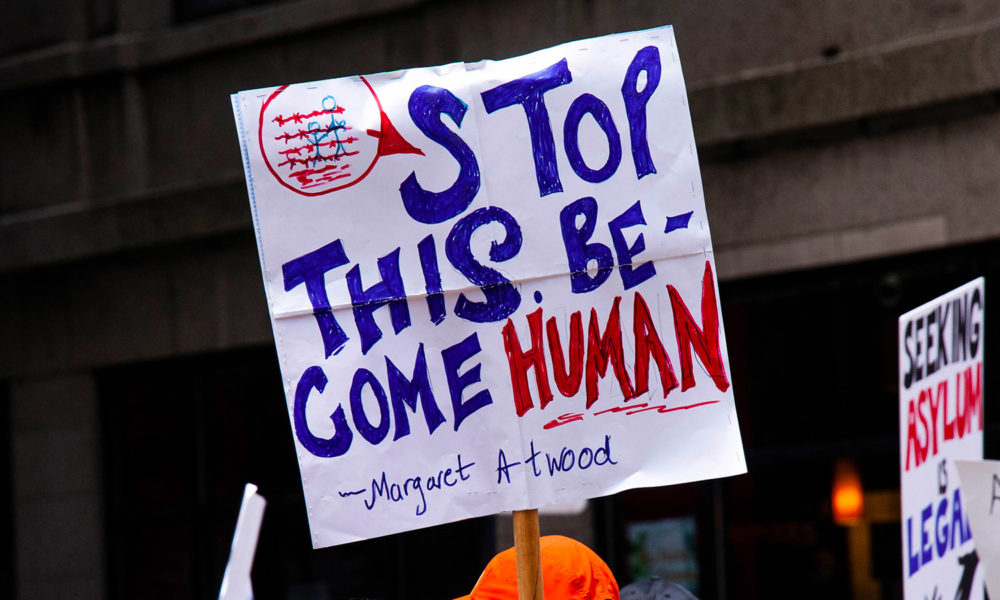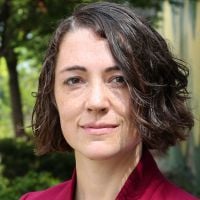This month, news broke alleging that an Immigration and Customs Enforcement (ICE) facility in Georgia is performing medically unnecessary hysterectomies in immigrant women. A whistleblower has come forward claiming that a doctor at the facility is known as a “uterus collector” and several women have said they had hysterectomies performed on them without explanation. Today further details and more firsthand accounts have emerged. The allegations must be fully investigated, but it is clear that the scientific community must not be silent about these horrific claims.
To put these allegations in context and learn more about the role of scientists and medical experts in perpetuating harm to Black and Brown communities, especially when it comes to reproductive rights, I interviewed Guttmacher Institute Senior Research Scientist Liza Fuentes. Dr Fuentes holds a doctorate in public health and has more than a decade of experience in reproductive health research.
GG: What was your initial reaction when you heard about these allegations?
LF: I was horrified and really devastated. At the same time, this news comes as no particular surprise when you understand the repeated times in which basic reproductive rights have been violated, primarily in women and primarily in Black and Brown people. In recent history, ICE has been responsible for multiple violations of reproductive rights. For example, the separation of children from parents arriving at the border was often framed as a policy choice but we know that this decision was made purposefully to terrorize immigrants, even those asking for asylum. We know that this violates reproductive and human rights. And immigrant adolescents who arrived at the border pregnant have been prevented from seeking abortion care, and the ACLU had to litigate the right of a young woman to obtain an abortion. So unfortunately, it is in the realm of possibility that hysterectomies would be performed on people who did not request them, for which it’s not even clear they were medically necessary.
GG: What are the systemic problems that create conditions for such atrocities to occur?
LF: One element I’m interested in is the conditions more broadly that allow these types of things to happen. There’s no policy that allows a person to perform hysterectomies on someone against their will. And yet how do we end up here? How do we end up in a place, for example, where people are put into clinical trials in Puerto Rico in the 1950s and 60s without their consent? Where Black folks and folks who were deemed intellectually challenged were sterilized against their will in dozens of states throughout the 20th century? The through-line is that these things end up happening whether they are official policy or not.
Starting with the history of slavery, part of American culture is to frame stories about some groups of people as being social problems in and of themselves, instead of figuring out the way that social policy and communities can lift up the dignity of all people. Dorothy Roberts brilliantly documented this in all of her work, but seminally in Killing the Black Body. Elena Gutiérrez, a sociological historian, documented the coerced and forced sterilization of Mexican-American women in California in the 1970s. In these cases, people living, working, and raising families here are framed as the problem, not part of a community in need of solutions, governments, and communities that support all health. So it’s not a far walk from understanding those cases to see how do we get to a place where people are coerced into sterilization. It is made possible because of the ways in which immigrants and Black and Brown people are talked about. That has a very real effect on how they are valued.
We know that science and scientists have long been complicit in harm to Black, Indigenous and people of color (BIPOC) communities, particularly when it comes to issues of reproductive health and justice. In what ways do you see science and medical expertise being exploited for harm in this case?
I want to acknowledge that this feels like a sensitive question because for many of us in the scientific community, our training and our work is so connected to the positive impact that we want to have on the world; however, science and medicine are not free from the entire context of human culture. Science is a way of knowing. It is an institution. It is part of our culture and it has not escaped the systems of oppression and constructs that are used to value some people over others. It is claimed that science is objective but that’s not true. Science has a point of view.
When we design our studies, there are values embedded in those study designs. Whether or not we interrogate them is another question, but they are there. Anne Fausto-Sterling wrote on how gender stereotypes were deeply embedded in medical textbooks and in some cases still are. It is so important for those of us who are scientists to interrogate and help each other understand how that happens by looking at specific examples and then applying that to our work.
One example is looking at research and development on contraception. When researchers were running the first clinical trials on the pill, participants were having distressing side effects and some 50% of people who were enrolled eventually dropped out. Yet, data on those participants were still included in analyses assessing the pill’s effectiveness in preventing pregnancy, even though the side effects were so severe that many people could not stay on it. Even if this approach demonstrated that the pill could prevent pregnancy while it was being used, it completely disregarded whether this is a contraception that a whole human woman can practically use to plan if, when, and how to become pregnant.
Fast forward 60 years, something that comes up now in my work as a researcher in family planning is the perceived need to balance individual autonomy (i.e. people using the form of birth control they prefer) and the public health need to improve the uptake of IUDs and Nexplanon because they’re more effective at preventing pregnancy. We are still living with that legacy of focusing on the biological elements and not the needs and preferences of the individual. That’s the through-line to how we get to forced hysterectomies at an ICE facility.
Many of us in science dedicate our lives to something called increasing access to care. But the procedures and technologies that we provide in medical settings are also being used in other settings with different goals. We see these as amazing tools to help people with bodily autonomy but they can be used for the opposite. For example, it was recently discovered that judges in Tennessee were offering people time off their sentence if they use Nexplanon. Similarly, California previously had a welfare family cap. If you were receiving public assistance and subsequently have another child, you wouldn’t get additional funds for that child from the state – unless you were using an IUD or Nexplanon when you became pregnant. These policies are inherently coercive. They represent a powerful narrative for who we value and under what circumstances, in ways that are so disturbing and not okay.
GG: What do you think the scientific community can do to better ensure that scientific and medical knowledge are not misused like this?
LF: We in the scientific and medical community should be incredibly active and vocal in saying that for any technology or procedure that we would use to improve people’s lives, it is an unacceptable, perverse use of those technologies to use them coercively where people’s rights are being violated. We have the obligation to condemn it in these cases. If, for example, you are an OB/GYN who performs hysterectomies when they are medically needed, you should be outraged that the procedure is being done on people are in detention when not medically necessary.
For scientists in academia, it feels very theoretical to think about these issues, and yet examining where we’ve embedded values and assumptions about who is valued and who isn’t in our work is crucial. If we don’t do that, we cannot have the impact on policy that we think we can. We have to make time to have these conversations with our peers.
These issues also arise in very different STEM field. Take, the engineering field. Robert Moses was a city planner who advocated for building highways through neighborhoods. He was a values-driven person and he valued mobility. This didn’t seem to be political but it absolutely was.
People think that if they take a moral, ethical, or political stance that it compromises the integrity of their science, but if we are really clear about what it means to do science and analyzing and presenting bias and being transparent to the best of our abilities, then this becomes an obligation. We are in charge of the standards in our field and we must uphold those.
GG: Where should people start if they want to learn more on this topic?
LF: If you don’t know where to start this conversation with yourself or with others, I’d recommend reading Killing the Black Body, by Dorothy Roberts. As scientists we were trained to learn and at some point we become experts. But to fight racial injustice and violations of reproductive autonomy, we must first do what we were trained to do and learn about our history.

